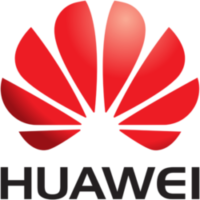Could a “cheaper experimental technology” that cuts the price of each cell site by 40 percent take on Huawei? Lawmakers in the U.S. think open radio access network, or OpenRAN, technology just might fit the bill. (See lede story.)
The Coalition For A Prosperous America, a non-profit trade group, reported the U.S. government tagged Huawei’s products as a security threat, urging allies not to implement the Chinese company’s technology while building out 5G networks. U.S. lawmakers also proposed bipartisan legislation that would provide at least $750 million to support new tech.
Meanwhile, the Pentagon is running experiments with the Defense Department to create the technology of “the future.” In an email to the Coalition For A Prosperous America, Lt. Colonel Robert Carver said a portion of the $200 million 5G budget would go towards OpenRAN.
OpenRAN uses U.S. software to connect network hardware manufactured by various companies, essentially turning the hardware into an interchangeable commodity. This solution also prevents networks from being locked into a proprietary system, forced to pay more when upgrades or changes are needed. Backers say the ability to pick and choose hardware from different suppliers makes it cheaper than the complete equipment-and-software packages sold by Huawei and its two major rivals, Ericsson and Nokia, according to the Coalition For A Prosperous America.
Currently, over a dozen telecoms are testing OpenRAN, including AT&T and British mobile company O2. Brendan O’Reilly, chief technology officer at O2, said telecom operators need to break their dependence on the big three equipment suppliers. “Over reliance on those vendors, no matter where they’re from, is not good for us as an industry,” he said. “Our future, the U.K. future, is definitely OpenRAN,” he added.
But not everyone has jumped on the OpenRAN bandwagon. Some in the industry caution that OpenRAN is in its infancy and faces challenges. At least one U.S. official has doubts that OpenRAN can challenge Huawei, reported the Coalition For A Prosperous America.
“This approach is completely untested and would take many years to get off the ground,” Attorney General William Barr, a former telecom company lawyer, said in February. To counter Huawei, he said, the United States should try to bolster sales for Ericsson and Nokia.
Rural Idaho company Inland Cellular is testing OpenRAN, first in the lab, and then on a hotel roof. According to Inland Cellular EVP Chip Damato, the company was looking for an alternative to Ericsson gear they’d been using for years. Damato was frustrated by increasing costs. “Anything you wanted to do was a huge financial hit on us,” Damato said. “Based on what we were doing, we couldn’t survive. … So we went out looking for alternatives.”
Inland began diversifying its network several years ago and learned about OpenRAN, supplied by Parallel Wireless, at a tradeshow. According to Damato, the results of the tests were impressive, with the equipment transferring data more efficiently than the network’s other cell sites. The lower cost per site allowed Inland to add more cell sites to rooftops and telephone poles quickly, improving service in its most heavily trafficked area, reported the Coalition For A Prosperous America. Inland was also able to expand into new, rural regions of Idaho, increasing its revenue stream.
“There was absolutely no way we could continue to grow in the direction we needed to go without that style of RAN,” Damato said. The system is currently a 4G network but can be converted to 5G down the road, through additional cell sites and a software upgrade, he said.
To compete with the Chinese telecom, “semiconductor innovation is the only route to make OpenRAN radios better than Huawei,” said Steve Papa, chief executive of Parallel Wireless. Papa said his company has applied to the Pentagon for R&D funding to improve the semiconductors that operate radio heads.




Reader Interactions